|
|
|
|
[Index]
[Back] |
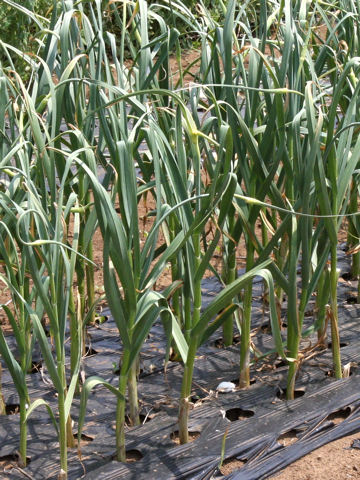 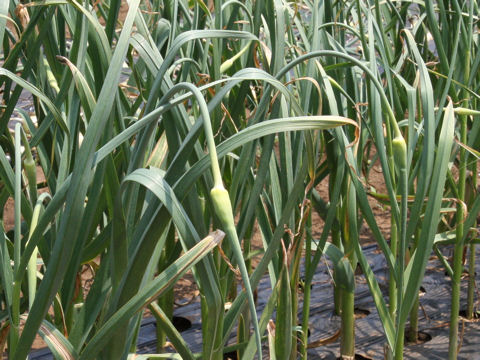 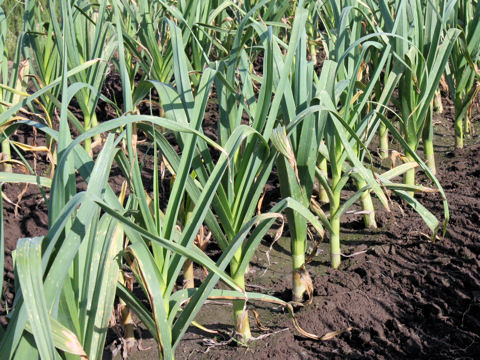 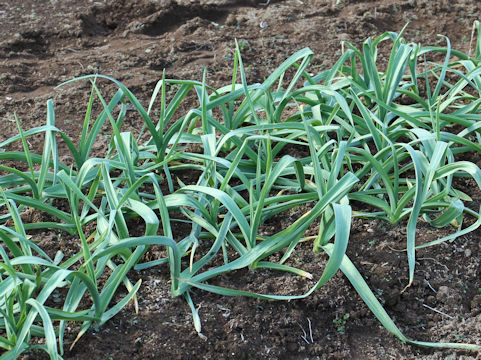 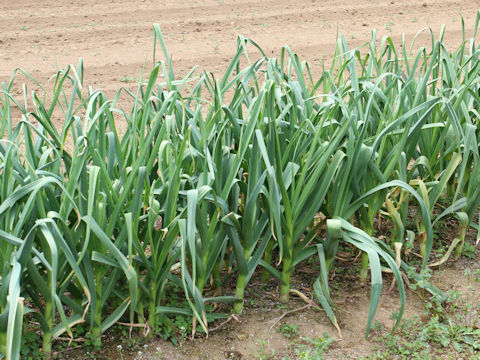 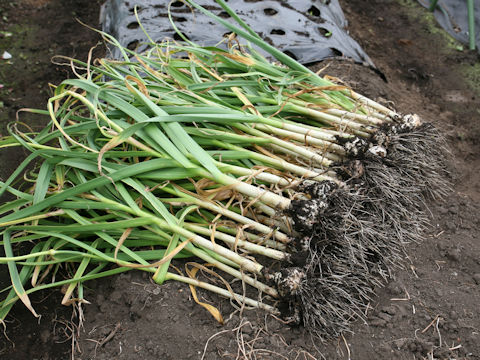 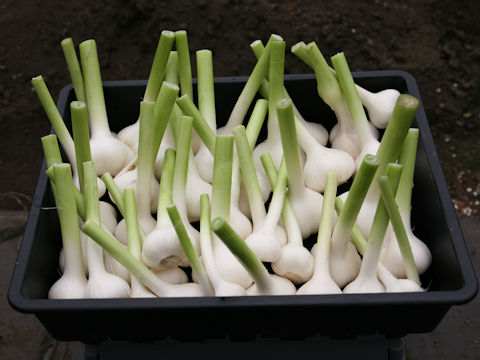 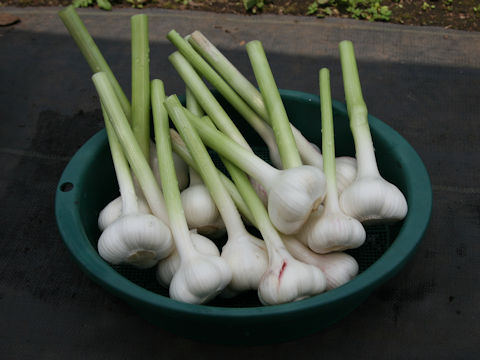 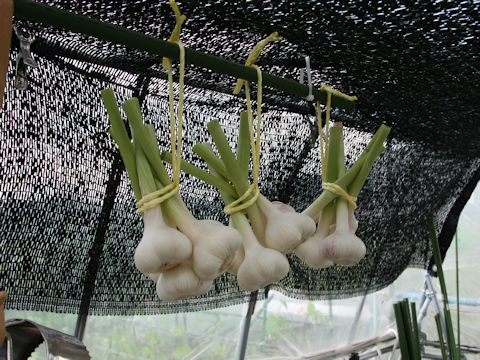 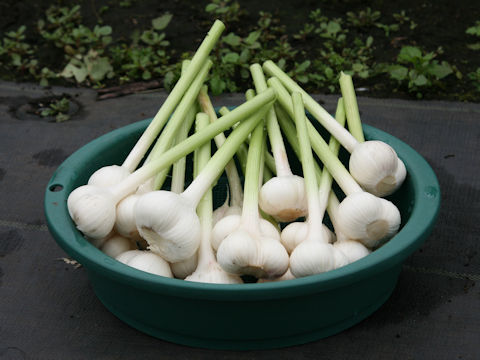 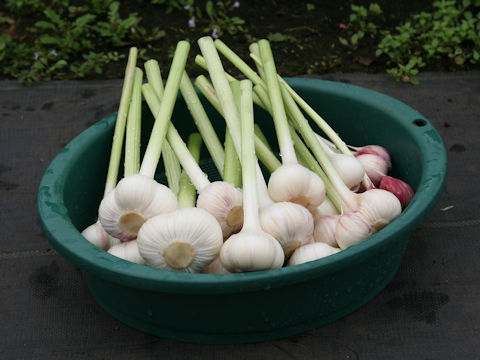 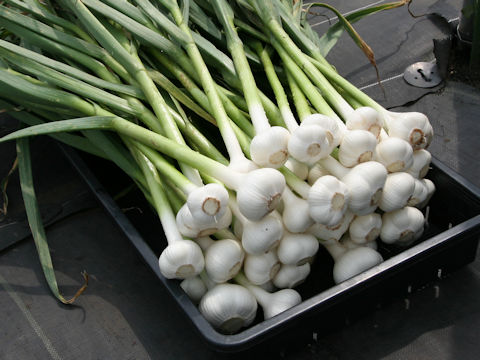 |
|
|
|
中央アジアのキルギス地方が原産だと考えられています。もともとの自生環境についてはわかっていません。栽培の歴史は古く、紀元前3000年の古代エジプトではすでに食用とされていました。わが国へは奈良時代に渡来しました。鱗茎は数個の小鱗茎に分かれ、扁平なひも状の葉を数個だします。5月から6月ごろ、花茎を伸ばして球状花序をだし、小さな淡いピンク色の花を咲かせます。鱗茎のなかには硫化アリル類と呼ばれる配糖体が含まれ、これが加水分解すると特有な臭気のもとになります。この鱗茎は、さまざまな料理に風味付けとして利用されます。 国内の「にんにく」には、寒地系と暖地系の2種類があります。寒地系の品種は「ホワイト種」で、青森県が主産地です。この球は大きくて、約6片の鱗片があるのが基本です。皮は白色でマイルドな味わいです。一方、暖地系の品種は「嘉定種(かていしゅ)」で、九州や四国地方が産地です。これは「ホワイト種」よりも小さく、10片程度の鱗片があります。球の皮は赤みがかっていて濃い味が特徴です。 写真中5~中8の品種は、「福地ホワイト六片」 中9は、「嘉定」、 中10は、「嘉定紫」、 そして下は、「ニューホワイト六片」。 |
|
|
ユリ科ネギ属の多年草で、学名は Allium sativum。英名は Garlic。 |
|
|
The Garlic (Allium sativum) belongs to Liliaceae (the Lily family). It is a perennial herb that is maybe native to Central Asia, Kyrgyzstan. The original habitat is obscure. This herb has been cultivated from the ancient days, and it was used as food in Egypt about 3000 BC. This herb was introduced into Japan in Nara Era (710-794). The bulb is diveded into several cloves and sends out some flat corded leaves. The spherical cluster is borne on the flowering stalk and bloom pale pink flowers from May to June. The bulbs contain glycosides called allyl sulfides, which, when hydrolyzed, give them their characteristic odor. These bulbs are used as a flavor enhancer in a variety of dishes. There are two types of "Garlic" in Japan: cold-weather and warm-weather varieties. The cold-weather variety is the "White variety" and is mainly produced in Aomori Prefecture. These bulbs are large and basically have about six pieces of scales. The skin is white and has a mild flavor. On the other hand, the warm-weather variety is the "Katei variety", which is produced in the Kyushu and Shikoku regions. It is smaller than the "White variety" and has about 10 scales. The skin of the bulb is reddish and has a rich taste. |
|
|
[上・中1] 千葉県香取市大角にて、2011年05月20日撮影。 [中3] 同上にて、2015年12月09日撮影。 [中4] 同上にて、2016年04月26日撮影。 [中2] 千葉県香取市田部にて、2010年05月13日撮影。 [中5・中6] 宮城県川崎町支倉にて、2021年06月15日撮影。 [中7・中8] 同上にて、2022年06月19日撮影。 [中9・中10] 同上にて、2022年06月24日撮影。 [下] 同上にて、2023年06月08日撮影。 |
|
|
|
Shu Suehiro |